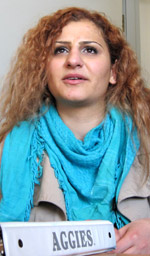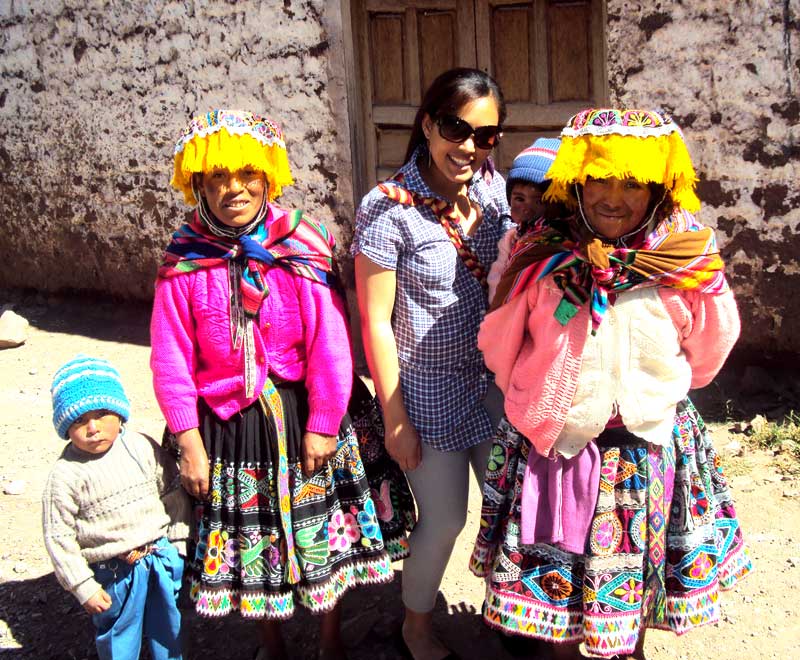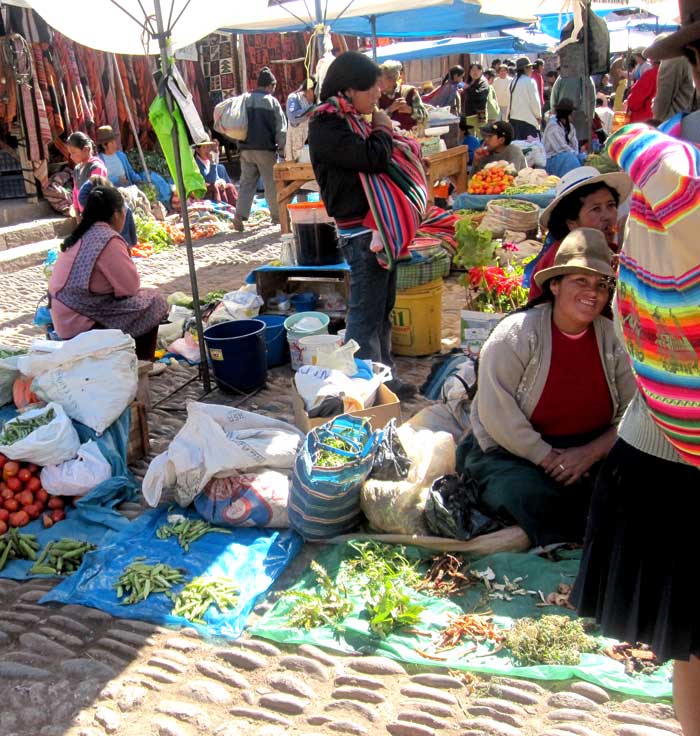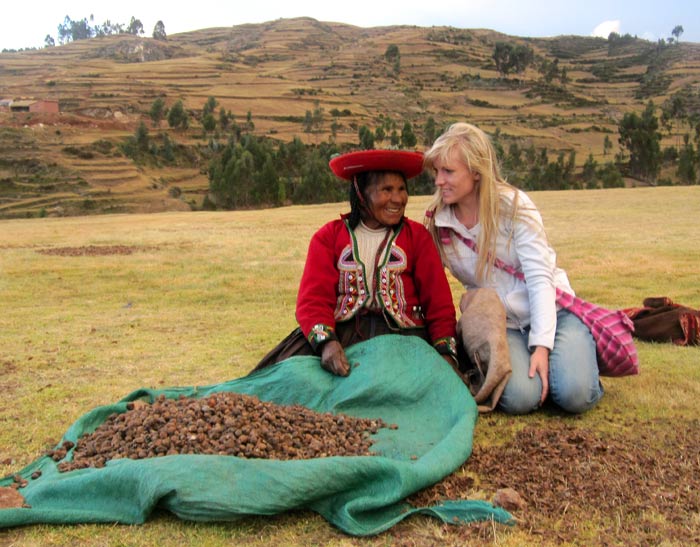Travelogue: The contrasts and markets of Cusco
July 4th, 2010 Posted in OpinionBy Satenik Sargsyan
 LIMA, Peru—After visiting the major cities of the two most economically advanced countries in South America, Chile and Brazil, I was under the impression that the concept of “less developed countries” in this part of the world must only mean leaving trash bags on the sides of the street, having a slightly less developed infrastructure or lacking public drinking regulations (as in the example of the left-over beer bottle piles I observed at Copacabana beach after the Brazil-North Korea World Cup game). Peru proved me wrong.
LIMA, Peru—After visiting the major cities of the two most economically advanced countries in South America, Chile and Brazil, I was under the impression that the concept of “less developed countries” in this part of the world must only mean leaving trash bags on the sides of the street, having a slightly less developed infrastructure or lacking public drinking regulations (as in the example of the left-over beer bottle piles I observed at Copacabana beach after the Brazil-North Korea World Cup game). Peru proved me wrong.
As we drove away from our comfortable hotel in downtown Lima after a nutritious breakfast at 7 a.m., the true face of a third-world country was slowly revealed to us. We watched construction workers who had started their daily routine of dust and hard work much earlier than we, a gr oup of complaining students; fresh fruit market sellers polishing their products to make them more attractive to buyers and beggars, hoping for generous customers.
oup of complaining students; fresh fruit market sellers polishing their products to make them more attractive to buyers and beggars, hoping for generous customers.
The farther we drove from the downtown, the more we saw that we were the lucky minority to have enjoyed breakfast that morning. What we were yet to discover was that these people would be considered prosperous than most others in Cusco, because they had a steady income.
 Cusco is one of the main tourist destinations in Peru because of its proximity to the archaeological site of Machu Picchu. The City of Contrasts, as I named it, Cusco had a tremendous number of English speakers and petite natives, dressed in traditional dresses, who were either holding baby llamas in their hands, passionately trying to get the “gringos” to take pictures with them for tips, or selling “real alpaca blankets, señorita,” to passersby. For 70 percent of these people, tourists are their only source of income.
Cusco is one of the main tourist destinations in Peru because of its proximity to the archaeological site of Machu Picchu. The City of Contrasts, as I named it, Cusco had a tremendous number of English speakers and petite natives, dressed in traditional dresses, who were either holding baby llamas in their hands, passionately trying to get the “gringos” to take pictures with them for tips, or selling “real alpaca blankets, señorita,” to passersby. For 70 percent of these people, tourists are their only source of income.
One has to be at a Cusco market to understand the business and psychological aspects of true tourism culture in Peru. Narrow alleys of claimed alpaca wool, the proud symbol of the Inca emperors, brief English sentences of the sellers, followed by “amiga” and “señorita,” inviting us to take a look at the products with a tad of pleading in the voice, little girls selling traditional whistles in the sun—all this makes the Cusco markets a tourist attraction.
 Seemingly helpless at first sight, these people have taught themselves the fundamentals of business. They have learned that touching the product means much more than glancing at it. Therefore the buyer is willing to pay a higher price. This immediately makes the prices jump. A scarf that was offered to the previous customer for S/.30 (equivalent of approximately $10), was offered to me for S/.50. Unaware of this and being a hopeless soft-touch (and to be entirely honest, lacking business bargaining skills), I ended up paying S/.35.
Seemingly helpless at first sight, these people have taught themselves the fundamentals of business. They have learned that touching the product means much more than glancing at it. Therefore the buyer is willing to pay a higher price. This immediately makes the prices jump. A scarf that was offered to the previous customer for S/.30 (equivalent of approximately $10), was offered to me for S/.50. Unaware of this and being a hopeless soft-touch (and to be entirely honest, lacking business bargaining skills), I ended up paying S/.35.
My bartering failures were easily forgotten after dinner. The fruit and vegetables dishes make Peru an ultimate paradise for a vegetarian. While keeping the traditions of their ancestors in meat dishes, Peruvians take advantage of their abundant soils to make delicious vegetable salads as well.
I was especially happy to go to a supermarket where I only paid S/.3 (equivalent of about $1) for the amount of fruit worth about $8 in the United States. Luckily, I never had to bargain again.
• Satenik Sargsyan is a JCOM major participating in a summer-long study abroad program in South America with the USU Huntsman College of Business, reporting on the group’s hands-on business learning and cultural lessons.
TP
Tags: Cusco, Huntsman Business School, Peru, thrid world

One Response to “Travelogue: The contrasts and markets of Cusco”
By Michael Wellspear on Jul 6, 2010
That is just wrong. The price should be higher for non-modified fruits/foods, than the chemically sprayed ones the US has in the supermarkets.
I mean, if the economy is on that level, you can’t take up the prices. But in the US, I think it’s only fair that people get access to REAL fresh food, even if it would cost a little more.